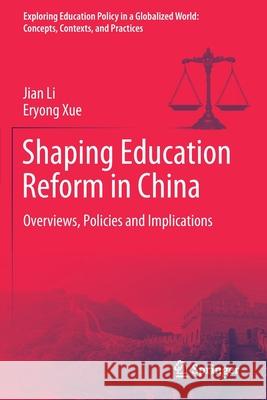Shaping Education Reform in China: Overviews, Policies and Implications » książka
topmenu
Shaping Education Reform in China: Overviews, Policies and Implications
ISBN-13: 9789811577475 / Angielski / Miękka / 2021 / 248 str.
Shaping Education Reform in China: Overviews, Policies and Implications
ISBN-13: 9789811577475 / Angielski / Miękka / 2021 / 248 str.
cena 403,47 zł
(netto: 384,26 VAT: 5%)
Najniższa cena z 30 dni: 385,52 zł
(netto: 384,26 VAT: 5%)
Najniższa cena z 30 dni: 385,52 zł
Termin realizacji zamówienia:
ok. 22 dni roboczych
Bez gwarancji dostawy przed świętami
ok. 22 dni roboczych
Bez gwarancji dostawy przed świętami
Darmowa dostawa!
Kategorie:
Kategorie BISAC:
Wydawca:
Springer
Język:
Angielski
ISBN-13:
9789811577475
Rok wydania:
2021
Ilość stron:
248
Waga:
0.35 kg
Wymiary:
23.39 x 15.6 x 1.32
Oprawa:
Miękka
Wolumenów:
01
Dodatkowe informacje:
Wydanie ilustrowane











